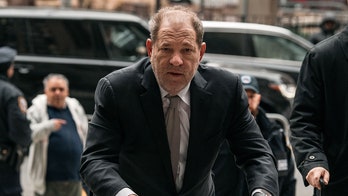Who is Patty Hearst and where is she now?
Patty Hearst may be known for her famous last name, but she is much more than just an heiress. Here’s a look back at her infamous kidnapping, self-professed radicalization and where she is today.
On February 14, 1974, an American heiress was kidnapped from her Berkeley, Calif. apartment, only to later renounce her family after claiming to have joined a domestic terrorist group as a gun-toting guerilla.
It’s not the synopsis of a Hollywood blockbuster, but rather the strange, real-life tale of Patricia “Patty” Hearst, the granddaughter of publishing magnate William Randolph Hearst.
While the 19-year-old would be arrested a year later for taking part in a robbery of a California bank on behalf of the Symbionese Liberation Army [SLA], the story continues to perplex those who’ve wondered over the years whether Hearst was a victim of Stockholm Syndrome or merely a criminal.
A documentary hopes to shed light on a dark time in American history.
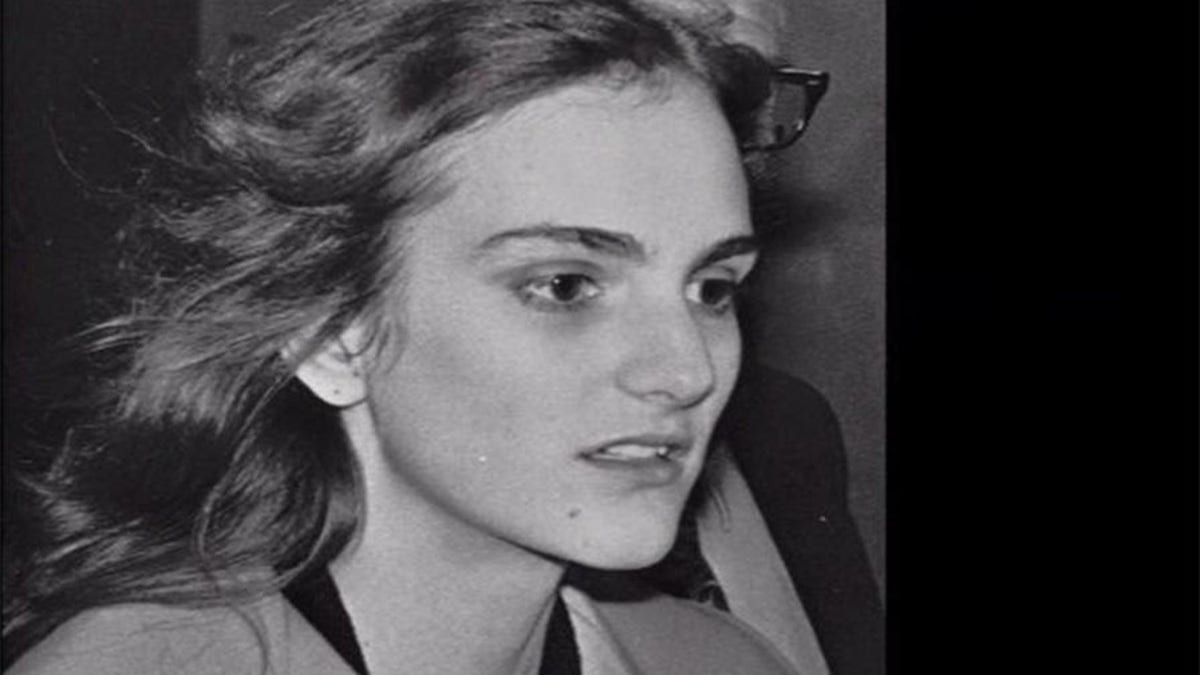
Patty Hearst (AP)
The Smithsonian Channel is revisiting the story of Hearst as part of their series “The Lost Tapes.” The episode utilizes Hearst’s own voice recordings, first-hand audio tapes of the kidnappers and rediscovered news footage to shed more light on what happened during those 19 months.
Producer Tom Jennings was shocked to discover how the SLA, a seemingly small underground anti-government radical group, quickly managed to use Hearst as a means to get their message widely publicized by the media.
“In the several months before they kidnapped Patty Hearst, two of their members were arrested and eventually convicted of murdering an Oakland school official,” Jennings told Fox News. “That set the table in the sense that these people were very capable of committing violence.
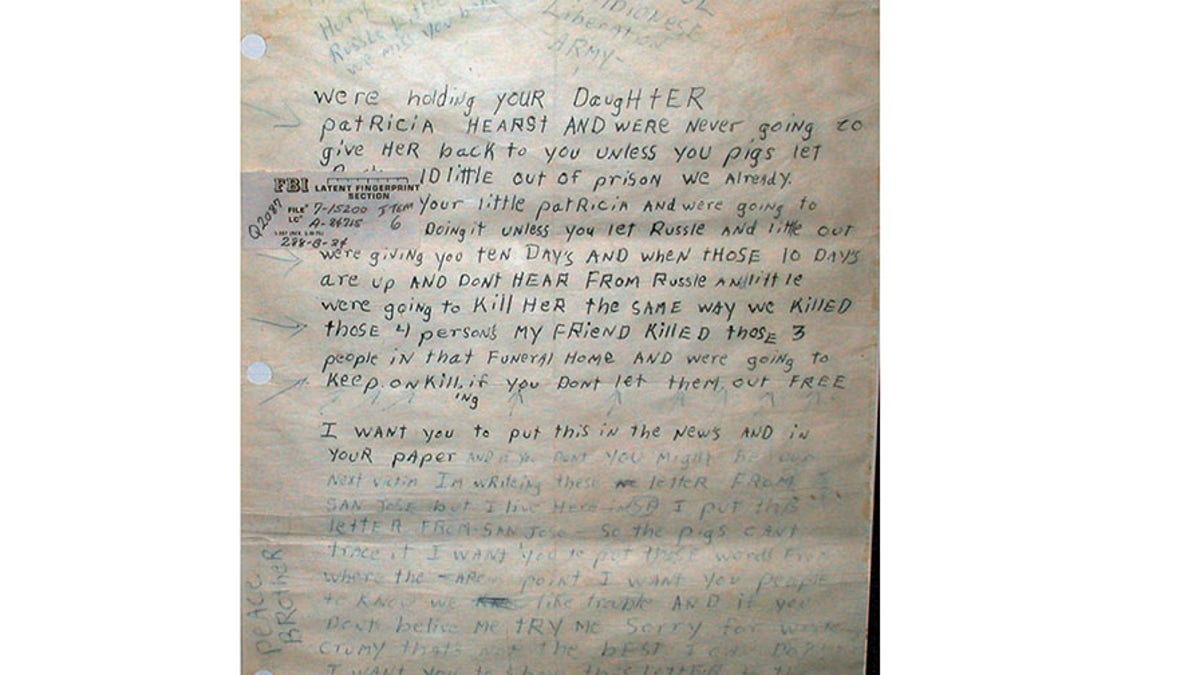
Patty Hearst kidnap letter. (Courtesy of the Smithsonian Channel)
"And so Patty Hearst comes along and it was a very opportunistic way for them to put themselves on the front page of newspapers every day… They were certainly good at playing the media to their benefit back then.”
Several days after the kidnapping, Berkeley radio station KPFA received one of many communiques the SLA would mail to the press. At first, Hearst seemed calm and composed, assuring her distraught parents she wasn’t starved or beaten by her captors. However, the FBI revealed that on April 3, the SLA released an audiotape where Hearst declared she’d joined their fight to free the oppressed and had taken on a new name, Tania.
A dozen days later, she was spotted on a San Francisco bank surveillance wielding an assault weapon “barking orders to bystanders and providing cover to her confederates.” It led to a massive manhunt.

Patty Hearst as "Tania" holds machine gun during the bank robbery in San Francisco. (AP)
“The question is, was this a Stockholm Syndrome type of thing where she wound up having empathy with the people who are actually holding you hostage?” said Jennings. “There’s probably some of that involved. I didn’t get the sense from studying this… that she was playing along… To me, she sounded very genuine in her hatred of the government and her family. I think [the SLA] had turned her.”
Jennings claimed Hearst was kept inside a broom closet for up to 22 hours a day and reportedly even had a sexual relationship with one of her captors. He wasn’t convinced Hearst joined the SLA willingly.
“She was plucked out basically from a life of luxury… having been raised by the Hearst family, to being tied up in a broom closet for days on end, being indoctrinated to this point of view that, everything having to do with how society was held together was wrong,” said Jennings. “Who among us is to say how we would react under those kinds of circumstances?”
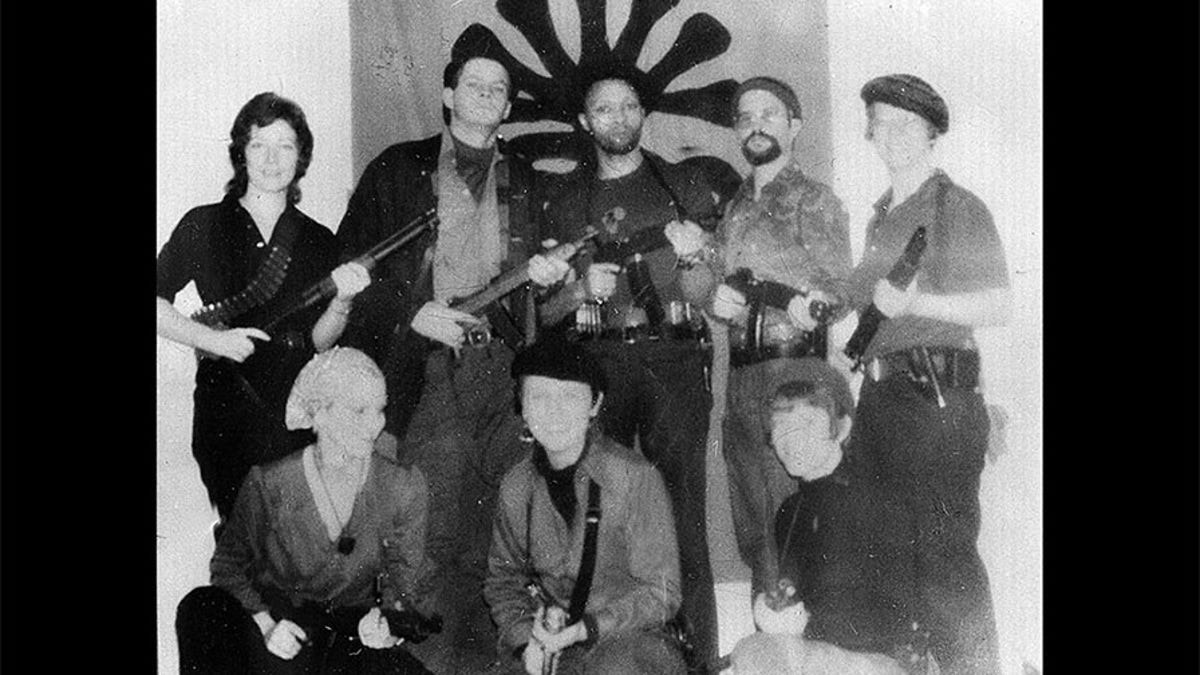
Symbionese Liberation Army members: Patty Hearst (lower left), Cinque (center rear), Camilla Hall (right rear), William Wolfe (second from left rear) and William Harris (second from right rear). (AP)
The FBI shared that during Hearst’s disappearance, the SLA released audiotapes, demanding millions of dollars in exchange for her freedom. But during that time, she was being transformed by the SLA to become a poster girl for their cause.
“I believe [the SLA] saw themselves as kind of a modern-day Robin Hood organization where they are literally going to rob from the rich to give to the poor,” said Jennings. “Their original demand was 70 dollars of groceries for every person on welfare in the state of California in 1974. And somebody ran the math and said, ‘Well, that’s 400 million dollars.’
"Even for someone like Hearst, that’s not an amount he could come up with. He came up with the first $2 million and they demanded more… This demand of food for the people, that’s when Patty started to turn in her tapes… It’s in my opinion they were trying to make a point… The point was you’re rich, many people are poor. They deserve to have a decent quality of life. And you’re the one who’s going to pay for that by giving them food.”

Patty Hearst being moved after arrest. (Courtesy of the Smithsonian Channel)
But the radical group would meet a fiery end.
On May 16, 1975 two SLA members attempted to steal an ammunition belt from a local store. While they weren’t caught, authorities discovered their getaway van. They ultimately found the SLA’s safe house and by the following day, the compound was surrounded by police. A shootout ensued and the building went up in flames. Six members, including SLA leader Donald DeFreeze, died in the blaze.
Hearst wasn’t at the scene, but her life of crime would soon be over. In September 18, 1975 the FBI captured the socialite in San Francisco. She was convicted of bank robbery charges and sentenced to seven years in prison. However, Hearst was released in 1979 after President Jimmy Carter commuted her sentence.
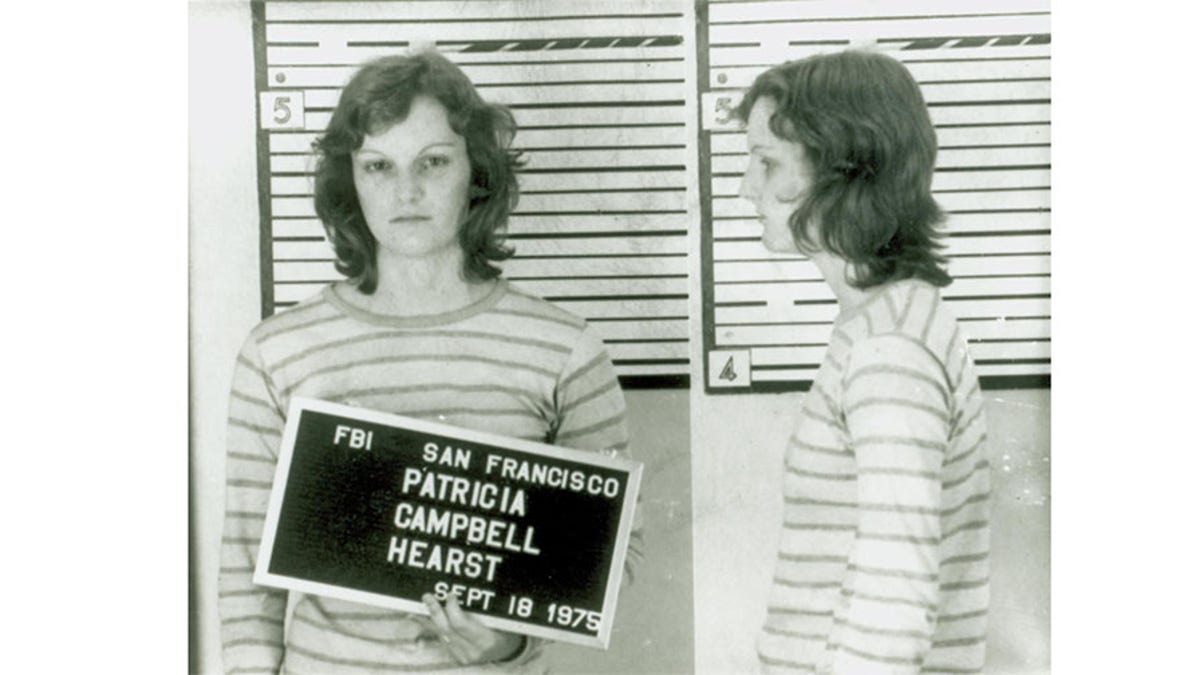
Patty Hearst mugshot. (Courtesy of the Smithsonian Channel)
The New York Times reported that Hearst’s lawyers insisted she was reportedly physically and sexually abused by her captors, as well as brainwashed into joining them.
As for the SLA? Jennings said the group is no more.
“As far as I know, there’s no active organization called the SLA at this time,” he said. “As far as I know, after the arrests and the deaths of most of their members in the fire, that was pretty much the end of the group.”
According to the FBI, the last two members were arrested in 1999 and 2002.
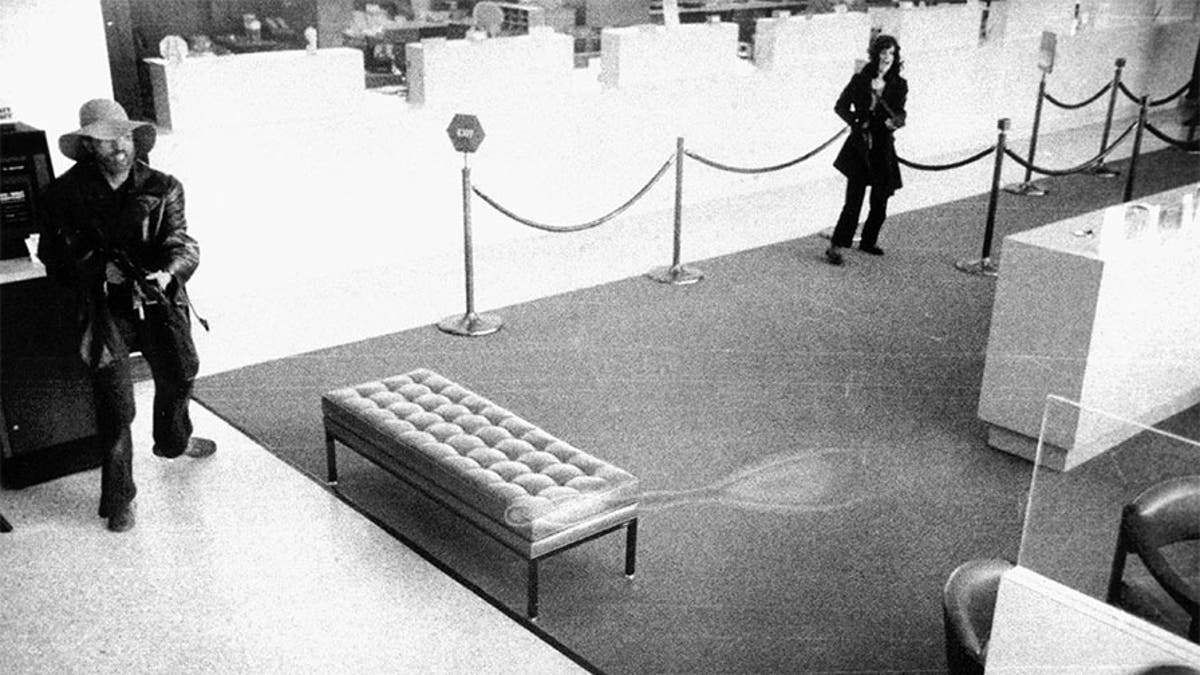
Patty Hearst during the bank robbery in 1974. (Courtesy of the Smithsonian Channel)
Jennings said Hearst now enjoys a quiet life while actively participating in the Westminster Kennel Club Dog Show with her award-winning pooch.
“That’s kind of her life,” said Jennings. “I know she did some media since her release from prison, but very little. She doesn’t talk much about this… It’s a strange twist of fate she would wound up running around Madison Square Garden with show dogs, considering the turmoil and the trauma she went through with this kidnapping and having to go to prison for bank robbery."
"The Lost Tapes: Patty Hearst" premieres Sunday, November 26 on the Smithsonian Channel.





